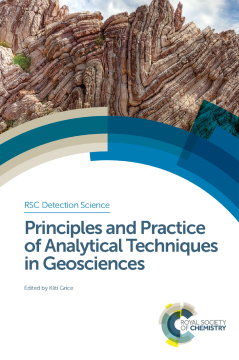
Additional Information
Book Details
Abstract
The pace of revolution in analytical chemistry in the field of Geosciences has been dramatic over the recent decades and includes fundamental developments that have become common place in many related and unrelated disciplines. The analytical tools (nano to macro-scale from stable to radioactive isotopes to synchrotron imaging) used have been applied to wide-ranging applications from inorganic to organic geochemistry, biodiversity and chronological tools, to build an understanding of how the Earth system evolved to its present state.
This book will provide an essential guide to exploring the earth’s natural resources and changing climate by detection science. Individual chapters bring together expertise from across the globe to present a comprehensive outlook on the analytical technologies available to the geoscientist today. Experienced researchers will appreciate the broad treatment of the subject as a valuable reference, while students and those new to the field will quickly gain an appreciation of both the techniques at hand, and the importance of constructing, and analysing, the complex data sets they can generate.
Professor Grice is a leading international expert in her field of organic and stable isotope geochemistry. She is Professor of Organic and Isotope Geochemistry in Earth sciences, Environment and Resources at Curtin University. Grice studies the evolution and extinction of life; how life relates to our natural resources (minerals and energy) on Earth - where it came from, how it could end, and how totally rare it might be. Grice uses biomolecules (biomarkers) that derive from natural products of ancient microbes, algae, flora and fauna retained in rocks that are used to accurately age petroleum, reconstruct the environments of past Earth extinction events (including the largest of all events that has a strong association with our petroleum and mineral reserves). She has a background in organic geochemistry, stable isotope geochemistry, biochemical pathways that occur in modern plants, algae, zooplankton and bacteria, sedimentary geology, Earth’s history, analytical chemistry, environmental chemistry, and basic understanding of paleontology and palynology. She has published in the highest echelons of journals including Science. She has published over 135 peer reviewed international articles, many book chapters. She has supervised 20 PhD students to completion since 2007. She has received many national and international awards including (and not limited to) the International Pieter Schenck award, Australian Academy of Science Award and Inaugural WA Premier’s award for Early Career Research Achievements in science, RACI Environmental medal and in 2013 was elected as an Honorary Fellow of the Geochemical Society and European Association of Geochemistry and a John Curtin Distinguished Professor in 2014. She is experienced in the development and application of analytical methods in the geosciences having pioneered the application of compound specific isotopes (C, H, S) of biomarkers in organic geochemistry, and the application of many robust tandem mass spectrometry methods.
